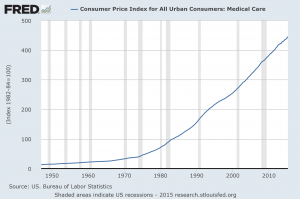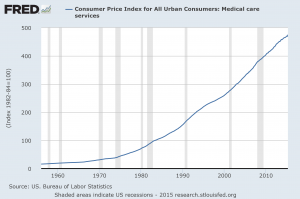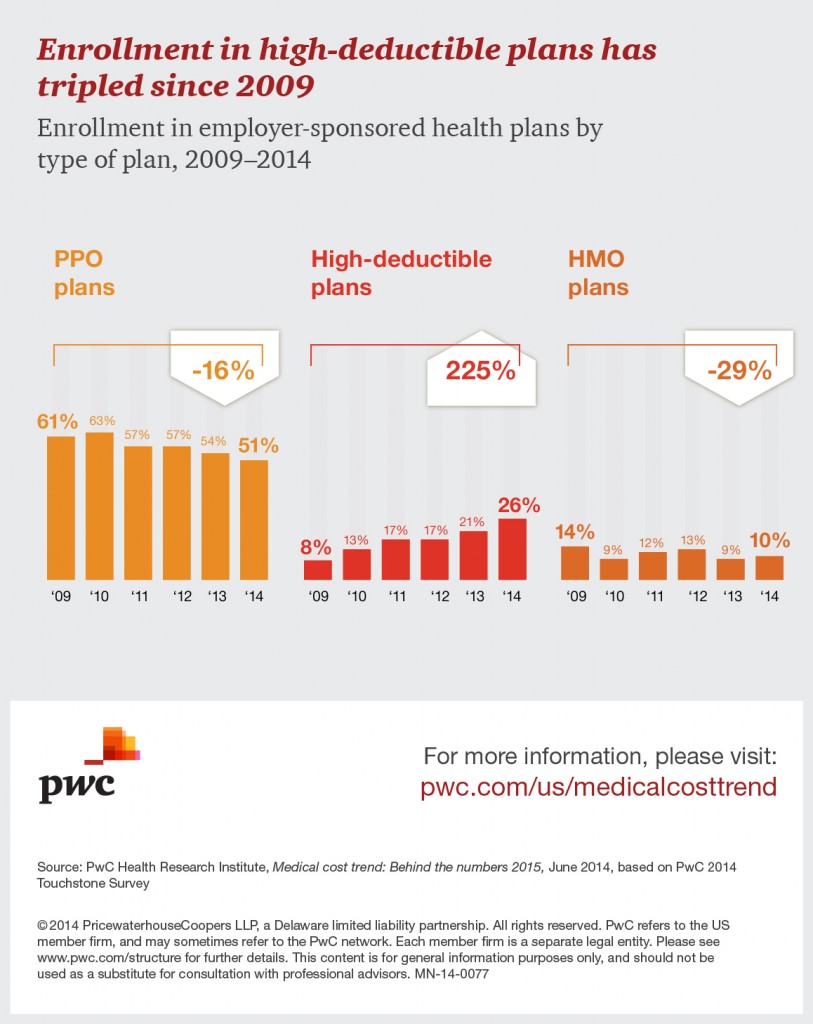
Surging medical costs and services were the most worrying trends to arise from the April CPI release, with costs rising at the fastest pace since January 2008. A 0.7% increase in the Medical Care Index was the largest contributor to headline CPI, and the dramatic increase has left many inflation commentators baffled with regards to the cause. A rise of this magnitude was not anticipated, and there appears to be no clear cut explanation for the sudden spike.
All medical related costs rose sharply, with Medical Care Commodities and Medical Care Services indices rising 4.1% and 2.6% on an annualized basis. Medical care services form the largest component of the medical care index which includes the prices of health insurance and professional services. The BLS also reported the cost of Hospital services rose 1.9 percent for the period. In summary, health related costs rose across every meaningful sector and will be of concern to policy makers going forward should such trends persist.
The uptick in April’s prices will come as a particular blow to working Americans who already shell out on the most expensive healthcare in the world. The distinct possibility of rising healthcare insurance premiums to reflect increased costs could compound the situation even further. While currently operating well below radar, ongoing health care inflation has the potential to provide a further drag on disposable income and the sustainability of the current recovery. While the warning signs are perhaps counterintuitive given the wider deflation trends within the economy, the official deflation mantra will be scant consolation to the average American feeling the burden of ever increasing real healthcare costs.
Why is Medical Inflation on the Rise?
The precise reason for the uptick in medical inflation this month is hard to pinpoint with any great certainty, but there are clear underlying trends in the industry which point to sustained price increases in 2015 and beyond. These trends suggest rising medical inflation is likely to be a long term phenomenon, and not the statistical blip it is currently being viewed as by most of the analyst community.
According to a recent report by PWC’s Health Research Institute, overall healthcare spending growth is likely to increase by 4.8% in 2015 as a result of an improving economy, increased number of speciality drugs, increased Physician employment, and structural IT integration issues. A recent report from a rival consulting firm Milliman projected even further increases, estimating a 6.3 percent growth in the costs of health care for a typical family of four on an employer-based plan in 2015.
PWC identifies the improving economy as one of the biggest catalysts for health care spending and costs going forward. The report argues that Improving consumer confidence is likely to increase medical appointments for those requiring treatment. It has been argued that the 2008 recession had caused cautious workers to delay doctor visits until their financial situation improved. As confidence improves throughout the broader healthcare sector, specialized drugs are likely to exert further pressure on costs. While roughly 4% of patients are currently prescribed speciality drugs, these drugs account for nearly 25% of the total drug spending in the United States. New treatments for Hepatitis C in particular are attracting a great deal of attention, with spending on these drugs alone forecasted to increase 209% by the end of 2015.
Timid healthcare costs have been taken for granted over the past few years, but the market could be in for a rude awakening should the current trend in health care costs persist throughout the next several months.
Are we headed for double digit rises in health care costs?
Prior to the recession in 2008, double digit health care costs were common, and as a consequence, employers started to shift an increasing amount of the financial burden directly onto their employees through the adoption of high deductible healthcare plans. Today, 44% of employers are considering such plans as the only option for employee medical benefits, with the trend only likely to accelerate in the coming years.
What this means for individual workers is obvious. Health care costs as a percentage of income are going to rise, and could do so with vigor if pre Lehman inflation rates are a guide. While the market continues to digest the implications of the stubborn deflation prevalent within the economy, working Americans face a very different prospect of keeping up payments on healthcare – yet another component of everyday life which is becoming less and less affordable for the average worker.
The specter of rising inflation in the healthcare sector is ominous for the broader market. If prices continue to rise above trend in the subsequent months, we could be looking at the real possibility of health care induced stagflation beginning to take hold throughout the economy.





